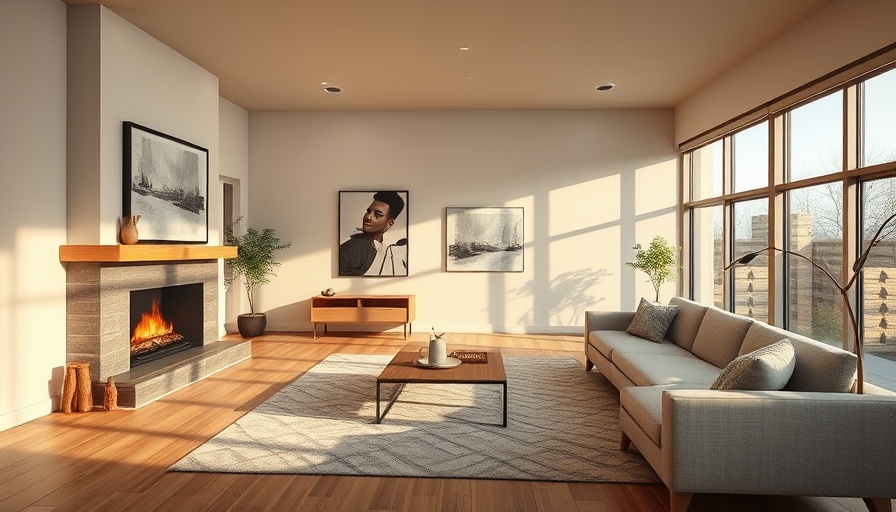
Understanding Vacant Home Staging
Vacant home staging is an essential strategy for sellers aiming to make a lasting impression on potential buyers. When a house sits empty, it can create a barrier between the property’s true potential and the buyer’s imagination. Properly executed staging transforms bare spaces into inviting homes, allowing buyers to envision how each room will function in their lives.
Why Staging Makes a Difference
One crucial reason to stage a vacant home is to provide context and purpose to each room. Buyers may feel lost in open layouts or awkwardly shaped spaces without furniture to guide their understanding. Staging helps alleviate this confusion by defining each area's function. For instance, it becomes easier to see the dining area’s potential with a table and chairs rather than an empty void.
Furthermore, staged homes tend to feel larger and more inviting. Empty rooms can appear smaller and less appealing than they truly are. Staging helps to illustrate scale, making it easier for potential buyers to envision their own furniture in the space. Not only does this improve perception, but it also enhances emotional connections. Homes often generate interest in how they feel rather than merely their physical features, and staging creates warmth and demonstrates lifestyle.
Common Challenges in Vacant Home Sales
Selling an empty house comes with its fair share of challenges. Without furnishings, potential buyers may overlook unique architectural features or fail to appreciate how an oddly shaped room can be used. It’s not just about selling four walls; it’s about selling a lifestyle. Additionally, flaws and minor imperfections stand out starkly in empty spaces, which can deter prospective buyers. Staging redirects focus onto the home’s strengths, inviting buyers to envision a life within those walls.
DIY vs. Professional Staging: What You Need to Know
Choosing between DIY staging and hiring a professional can significantly impact the sale of a home. DIY staging can save costs but may lack the expertise needed to attract buyers effectively. Professionals understand how to highlight a property's strengths and create a narrative that appeals to the target audience. Investing in professional staging can yield a high return, as expertly staged homes often sell faster and at higher prices.
When considering options for real estate in areas like South Fulton, GA, or Wilson, NC, it's vital for sellers to weigh their choices carefully. Professional staging often includes high-quality props and design strategies tailored to meet local market demands, which can be crucial in a competitive environment.
Maximizing Your Return on Investment (ROI)
Understanding the ROI of vacant home staging can encourage homeowners to take this step seriously. Statistics show that staged homes can sell for up to 20% more than their non-staged counterparts, according to various real estate market analyses.
For example, homes listed on platforms like Zillow, Trulia, or Redfin that have high-quality, staged photos attract more attention and drive higher offers. In today's competitive real estate market, a well-staged home stands out, leading to quicker sales.
Final Touches for Showings
Before showing a staged home, a few key elements should be added to enhance appeal. Fresh flowers, inviting scents, and clean, well-lit spaces can set the mood, making buyers feel more comfortable and at home. Eliminating clutter and personal items can help buyers envision their lives within the space. Investing in top-notch real estate photography captures these final touches and transforms your listing into something truly marketable.
Conclusion: The Importance of Staging in Real Estate
Vacant home staging is not merely a cosmetic adjustment; it is a significant investment that opens the door to emotional connection and potential profitability. As buyers search for homes on online real estate platforms or attend open houses, a well-staged property can capture their attention and invite escalating offers. If you’re selling your home, consider the impact that staging could naturally hold. It is your chance to transform empty spaces into inviting homes where memories can be made.
 Add Row
Add Row  Add
Add 



Write A Comment